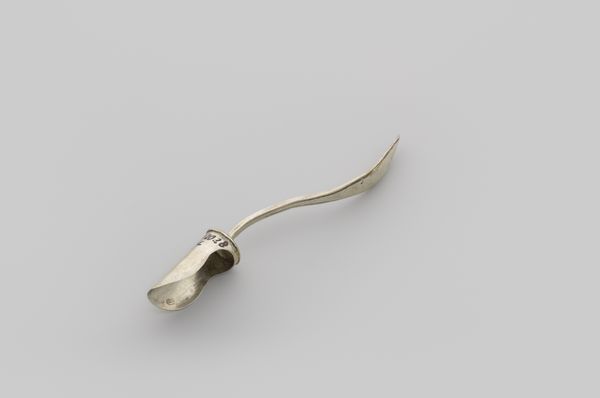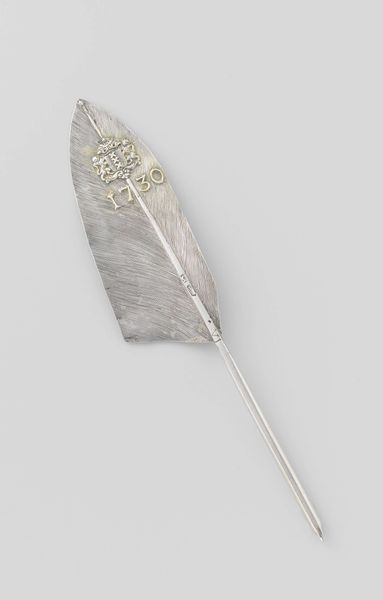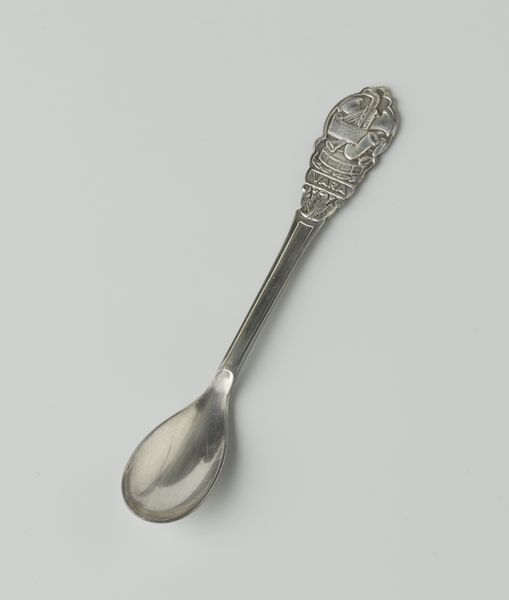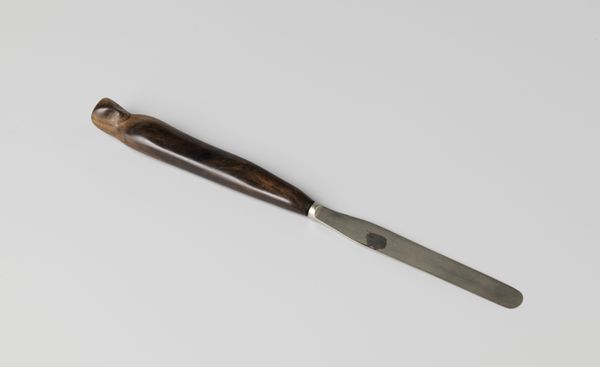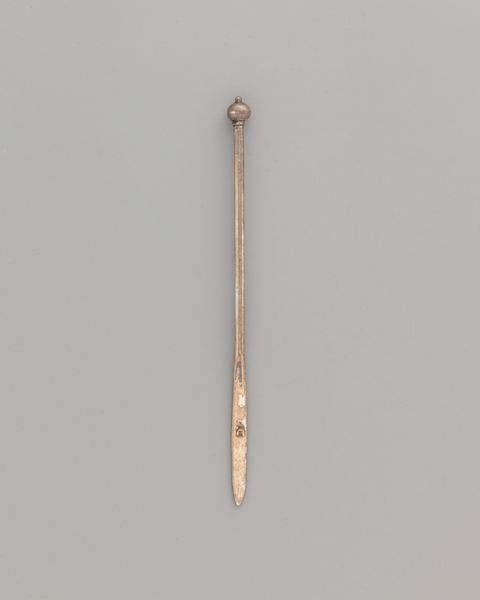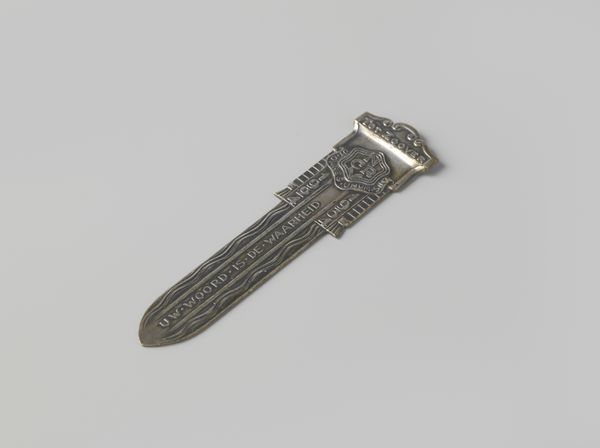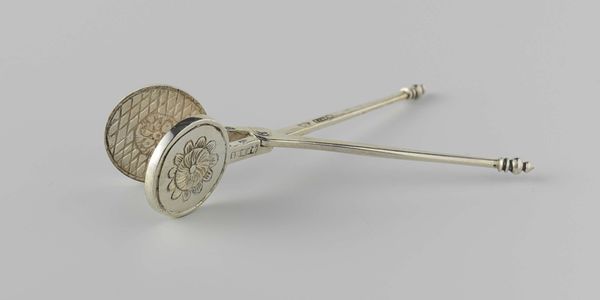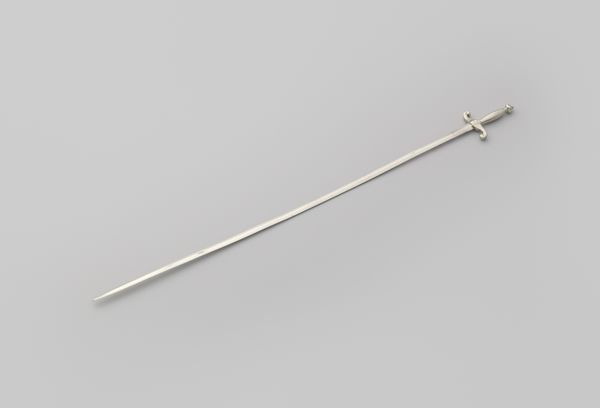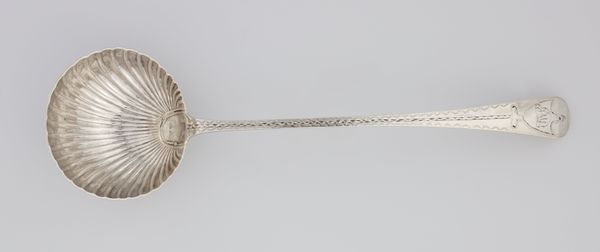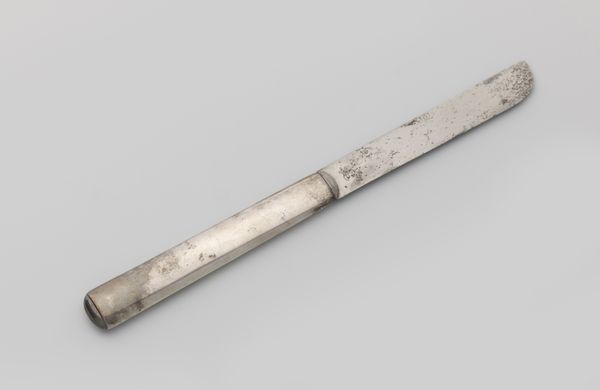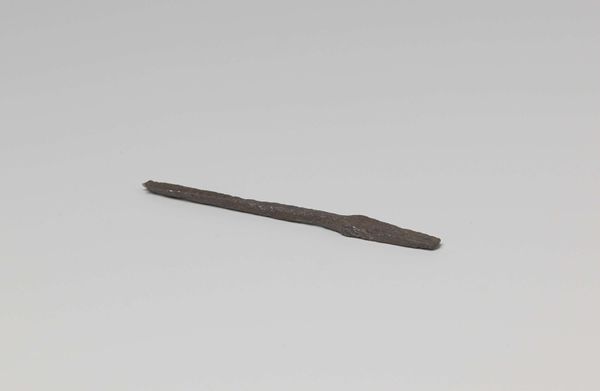
drawing, silver, metal
#
drawing
#
silver
#
dutch-golden-age
#
metal
#
decorative-art
Dimensions: height 27.5 cm, width 4.4 cm, depth 0.3 cm
Copyright: Rijks Museum: Open Domain
Curator: This beautifully crafted object is a silver prize pen, made in Amsterdam in 1754. Editor: It’s striking, almost surreal. The coldness of the metal mimics the delicacy of a feather. What was it awarded for? Curator: Prizes such as these, rendered in precious materials, highlight the societal value of education and scholarship. In this instance, it would have signified accomplishment in penmanship. Consider the skill needed not only to create but also to master handwriting in that period. Editor: The materiality screams status! The expense of crafting a functional object from solid silver… it's less about the act of writing and more about visible markers of societal roles and the craftsmanship itself. Is there any evidence as to who would've crafted this and the techniques they might have used? Curator: Silversmithing in Amsterdam during the Dutch Golden Age was a highly developed craft. Guilds carefully controlled the standards and training of artisans. These makers often had family workshops that stretched generations; the labour history woven into an object like this is fascinating. These items reflected municipal pride and were status symbols as much as tools. The Amsterdam coat of arms prominently stamped on the feather affirms this. Editor: So much more than just writing! What social institutions at the time helped reinforce values surrounding academic and artistic prowess to encourage artisans to compete? Curator: The Dutch Republic’s mercantile society cultivated a culture of competition and civic virtue. Prize pens were just one element; think also of the civic guard portraits, public displays of knowledge, collections—these are arenas where one publicly acknowledges skills and virtues, solidifying certain values. It's fascinating to observe what was esteemed. Editor: And to realize how much that esteem was also tangled with access, class, and resources. These "prizes," laden with material and civic meaning, weren't exactly democratic tools. Curator: Absolutely. They reflect the values of a specific class and contribute to constructing history through a very deliberate lens. A powerful object, isn't it? Editor: Indeed. It prompts us to ask questions beyond just artistic merit to the context of values that circulated within that society.
Comments
No comments
Be the first to comment and join the conversation on the ultimate creative platform.
